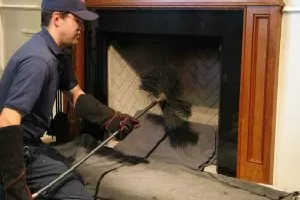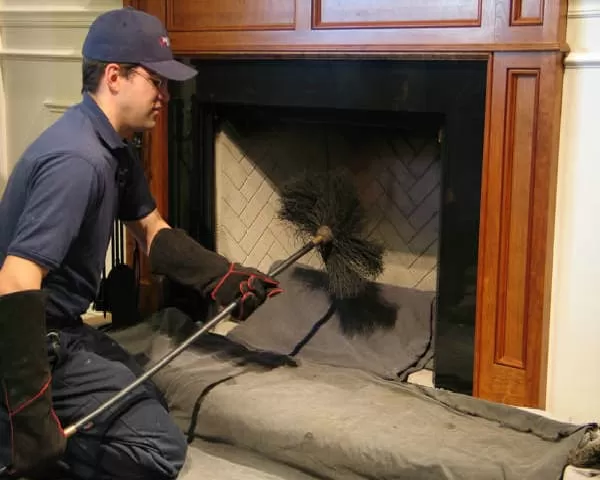How to Clean the Sooty Chimney ?
Things you will need
- Ladder
- Small bucket
- Hose
- Steel scourer
- White vinegar
- Hot water
- Bristle brush
- Mild liquid soap
Mix your first cleaning solution. Fill the bucket about 2/3 full with hot water. Add 2 cups of white vinegar. This will create a serious cleaning solution that is completely green and will lighten the mortar while combating soot stains.
Start scrubbing at the top of the chimney; otherwise, it will wash the soot and residue off the clean parts of the chimney below. Carry your cleaning solution bucket up your stairs. Rub the chimney with the steel wool. This will not damage the bricks, but will begin to remove accumulated creosote and soot. Really tough stains may require a wire brush.
Hose down the chimney. You can let the vinegar solution sit on the bricks as you go down the chimney. However, when you are finished, you may want to do a second cleaning with the bristle brush. Wash the entire chimney with the hose, starting at the top as before. Scrub the chimney with soap and water.
Mix approximately 6 drops of mild detergent in hot water in the bucket. Then use the bristle cleaning brush to scrub the entire chimney again from top to bottom. This will remove any remaining dirt that may have been dislodged by the bristle brush, but not completely removed from the chimney.
How to Clean the Chimney of a Wood-Burning Stove ?
- Make sure you have a safe and working wood stove by having the right chimney pipe that does its job effectively and efficiently.
- It is very important to make sure that the pipe is kept clean. Whether you use hardwood, softwood or pressed logs, tar and deposits build up in the fireplace and wood stove.
- You should establish a regular cleaning schedule based on how often you use the stove and how you operate the unit. If this is not done regularly, a fire may occur.
To Clean the Chimney of a Wood-Burning Stove
- Place a bag or bucket on the end of the tube so that creosote that comes off during cleaning can be collected in one place and then discarded.
- Vigorously brush the inside of the stove pipe with a wire brush . This will remove the buildup of dirt inside the pipe. This may need to be done several times if the pipe has not been cleaned regularly.
- After the pipe has been cleaned, replace it so that the stove and chimney pipe are reconnected.
How to Clean the Chimney of a Pellet Stove ?
Most contemporary pellet stove fireplace designs cannot prevent the formation of fly ash, which is residue formed by burning materials inside the fireplace. If the ash is not removed quickly, it can clog the fireplace ventilation system. In addition, older pellet stove stacks tend to produce a lot of soot. This sticky residue will cover the inside walls of the fireplace. Soot is much more difficult to remove than fly ash. The presence of soot also means that combustion inside the chimney is not complete. Therefore, it needs to be cleaned out.
Use the following instructions to clean the chimney of your pellet stove:
- Before cleaning the chimney, turn off the pellet stove. It should be allowed to cool for at least 2-3 hours. During the cleaning process, some of the ashes may be removed.
- It may settle on surrounding surfaces. Cover all surrounding furniture and appliances with plastic sheeting. Close doors to make sure ashes are not carried to other parts of the house.
- Be prepared with basic safety equipment. You can use simple things like glasses, plastic gloves, a mask and some overalls.
- Use standard-size fireplace brushes that are made for specific sizes of pellet stoves. Most brushes are sold with a complementary wand.
- If you don’t have a chimney rod, you can buy one at a hardware supply store. Brushing should be done with a downward motion: you should insert the brush into the exhaust hole of the chimney.
- Place the brush on the rod and insert it into the chimney. Holding the brush from the bottom end of the rod, begin scrubbing the walls of the chimney. Settled soot, debris or creosote are not easily removed.
- After scrubbing, open the stove to remove the displaced debris. You should sweep the stove with a dust pan and a broom. Shovel all debris into a bucket.
- Empty the contents of the bucket into a plastic bag and empty it. Vacuum the surrounding floor.
How to Clean the Iron Chimney
To clean an Iron Chimney
- Remove the chimney from its current location: If you can remove the cast iron chimney from its place on the wall, this will make your job easier. Otherwise, be sure to leave the protective sheets on as the work may get dirty. An old shower curtain is a good protective cover for the floor, as it is waterproof.
- Remove any old paint from the fireplace: First, you should remove any old paint from the fireplace. Do not try to burn it off with a blowtorch, as cast iron is a brittle material and can break easily. Also, old paint is most likely to contain lead and you do not want to burn it, releasing toxic fumes.
- Use a paint remover: Use a paint remover to remove the paint. Be sure to wear protective gloves, goggles and old clothing, and make sure the room is well ventilated. This type of paint remover can be caustic and also emits harmful fumes.
- Brush off the paint remover with a brush, then scrape it off with a plastic or wooden scraper; do not use a metal scraper as this could scratch or damage the chimney.
Use a stiff brush on the hard bits: for complex details, a stiff nylon brush will help. - You may find that there are several layers of paint on your fireplace, so be patient and keep working to remove it.
Clean the fireplace with a cloth soaked in white alcohol once the paint has been removed. Do not allow the water to get near the cast iron or it will begin to rust quickly. - Remove Rust: If there is rust in the fireplace, use wire wool to clean it. A wire brush can be used for stronger patches.
How to Clean a Brick Chimney Inside and Out
- To clean a brick fireplace so you can paint it or just enjoy it as it is.
- Whichever method you choose, be sure to place some fabrics and newspaper around the fireplace to protect its walls and floor from any splashes.
- In this method we create a soap paste and an abrasive material (in this case salt), which will absorb the dirt and then can be removed once it is dry.
- You will need protective rubber gloves, safety glasses, liquid detergent, table salt, a cloth, a hard bristle brush and some water.
- Take approximately 25 grams of each wash with liquid and salt, and mix the two together, adding a little water if necessary. When well mixed, you should have a creamy mixture. Put on your rubber gloves, take your cloth and use it to rub the mixture into the brick.
- Let the mixture dry, give it at least ten minutes. Then take the stiff brush and use it to scrub the dry mixture off the wall. You may have to repeat this, depending on how dirty the bricks are.
How to Clean a Boiler Chimney
- A boiler flue is the path followed by the combustible gases as they leave its place. Your chimney can be very well located inside the chimney of your house or it is a separate pipe that comes out through the roof.
- Most boiler ducts are made of galvanized steel; these pipes vary in size. A flue cleaning is recommended twice a year. The process is much more manageable if the buildup is minimal.
- Use a powerful flashlight to look down on the flue. Depending on how long the chimney has been uncleaned, some things you may see stuck to the inside of the chimney are rodent or bird droppings, dead insects or accumulated debris.
- Before starting any work, turn off the power to the boiler at the gas/water supply breaker. Make sure all pipes are cooled. Protect areas with plastic sheeting or tarps where dust or debris can flow.
- Follow all manufacturer’s instructions for using the fireplace solvent. Remove or open the ceiling damper. Use the flashlight to get an accurate view of the inside of the fireplace.
- Using the flue brush and extensions, lower the flue brush into the flue pipe, brush the inside of the pipe in a clockwise direction, then move counterclockwise from the bottom to the top.
- When you have completed brushing, close or replace the damper. Turn the boiler on and turn it back on.
How to Clean the Diesel Chimney ?
When a Diesel Fireplace works properly, little or no soot is generated as the fuel is burned to generate the heat needed to heat your home. To clean the oil fireplace With warm water and an old, clean cloth, wipe off the dirt several times until the fireplace is clean.
Brushes for Cleaning Chimneys Inside and Outside from Below
- The boiler exhaust pipe will extend from the roof or chimney. From the roof extension, measure the circumference of the flue. This will tell you the size of the chimney brush you need.
- Measure the height of the boiler flue pipe by measuring the height of the building to determine the length and number of extensions you need.
- A polyethylene brush is recommended for metal chimneys, as it will not scratch or wear out the stainless steel internal lining.
- If you purchase a chimney brush that is too large, it will be more difficult to lower the chimney but will work unless it is too large.
- If you have an oval chimney lining, then you can buy a brush that has the rectangular dimensions and then cut the teeth to make it oval. Some oval-size fireplace brushes are available.
Fireplace Cleaning Hedgehogs
When selecting the size of the Hedgehog you have to take into account 3 different things:
- The size and shape of the chimney.
- The type of chimney
- The byproduct you need to clean the chimney.
You should use a hedgehog equal to the largest part of the chimney.
That is, where the stove has a 5″ outlet and this runs in an 8″ chimney, you should use an 8″ hedgehog.
If you are going to enter a square or rectangular chimney, you must have a hedgehog that goes from corner to corner. So, for an 8 “x8” square chimney, you would need a 12 “hedgehog and a 9 “x9 “hedgehog would need a 13 “hedgehog. Since it will be difficult to get a 13″ hedgehog, you will need a 14” hedgehog.
Chimney Glass Cleaning
To clean the fireplace or glass of the wood stove, get some newspaper (I prefer the colorless ones), some running water from the tap in a pan or bowl, a bottle of water spray and some paper towels. Then, make sure you have your secret ingredient ready: ashes from your fireplace.
Fold or crumple your newspaper, dip it in the water and then in the ash. You only need to moisten the newspaper a little (just wet) and you only need a little ash to stick to the wet newspaper.
Take your wet newspaper with ash and start gently rubbing the element inside the glass of your fireplace. I prefer a circular motion because I find that it loosens the soot faster. You will notice that as you clean, your newspaper will turn black and get dirty.
Throw away that piece of newspaper and get some more, dip it in water, then the ash and repeat as necessary.
Sprinkle a little water on the glass and wipe with a paper towel. Repeat until the paper towels are free of black residue, then dry with a clean paper towel.
Average Cost in Euros for a Fireplace Cleaning
The prices of chimney cleaning in euros can vary here we show you some:
- Standard open fire sweep or lined stove (including vacuum) – £ 60.00
- Sweeping an unlined stove (including vacuum) – £ 65.00
- Wood stove service – £ 95.00 (sweeping included)
- Bird’s Nest Retreat – £ 95.00 (sweep included)
- CCTV inspection – £ 95.00 (sweep included)
- Embedded ducts are cleaned with a Creaway £275 chemical treatment that includes a pre-sweep.
Related Topics in ALPHAPEDIA
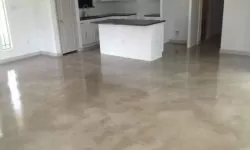
¿ HOW TO CLEAN CONCRETE FLOORS ?
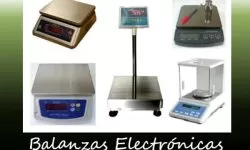
HOW A DIGITAL SCALE WORKS ?
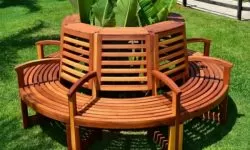
HOW TO MAKE WOODEN BENCHES ?
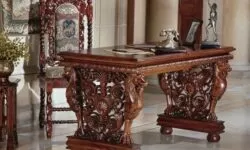
HOW TO PAINT OLD FURNITURE ?
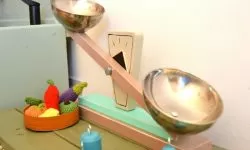
How to make a WOODEN BALANCE or HOME BALANCE ?
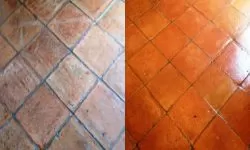
¿ HOW TO CLEAN TERRACOTTA FLOORS ?
Other Topics Related With Chimneys

CARTOON FIREPLACE Decorated and For Christmas: How to Make Them ?
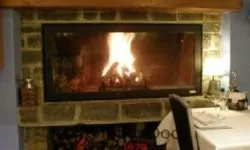
CASSETTE FIREPLACE: How Does it Work ? Prices, Brands and Types

CASSETTE FIREPLACE: Great Price on Qualified Products
Other Topics of Interest in ALPHAPEDIA

FREE COSTUMER SERVICE COURSE

FREE MASTER DEGREE IN TRANSPORTATION

HOW TO MAKE WOODEN BENCHES ?

FREE CERTIFICATE PROGRAM IN SPORTS NUTRITION
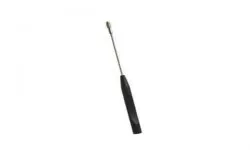
INOCULATING LOOP DEFINITION

FREE DOCTORATE IN TOURISM
CLEAN CHIMNEY IMAGE
